Which Way History?
Where Lake Constance pinches together, divided only by the gently flowing Rhine, one of Europe's most historically important cities should have been Swiss. Instead Konstanz is German.
Centuries ago the Swiss rejected its application to join the rapidly confederating country, fearing its inclusion would upset the carefully crafted city-rural balance.
At the beginning of the 15th century, the Council of Constance convened over the course of five years, drawing representatives from throughout The Holy Roman Empire to determine among other things which of the competing popes should become the one and only. Now the entrance to the harbor holds a rotating statue of a buxom woman holding a naked pope in each hand, as if judging them by their sorely lacking merit.
The harbormaster shooed me out as I entered by kayak thinking this was the border. Instead the border was marked by a different statue – actually a linear garden of statues of symbols of the tarot cards. The art replaced a fence in 2007. This is a wonderful symbol of modern times, though I discovered that where the sculptures end, a chain link fence continues for the three or so kilometers dividing the small Swiss town of Kreuzlingen from the city that once wanted to be Swiss, Konstanz.
My partners pulled my kayak down the Rhine while I walked the border, and now they’ve continued ahead while I write. We intend to spend tonight in Mammern unless I catch up quick and we can make it to Stein Am Rhein.
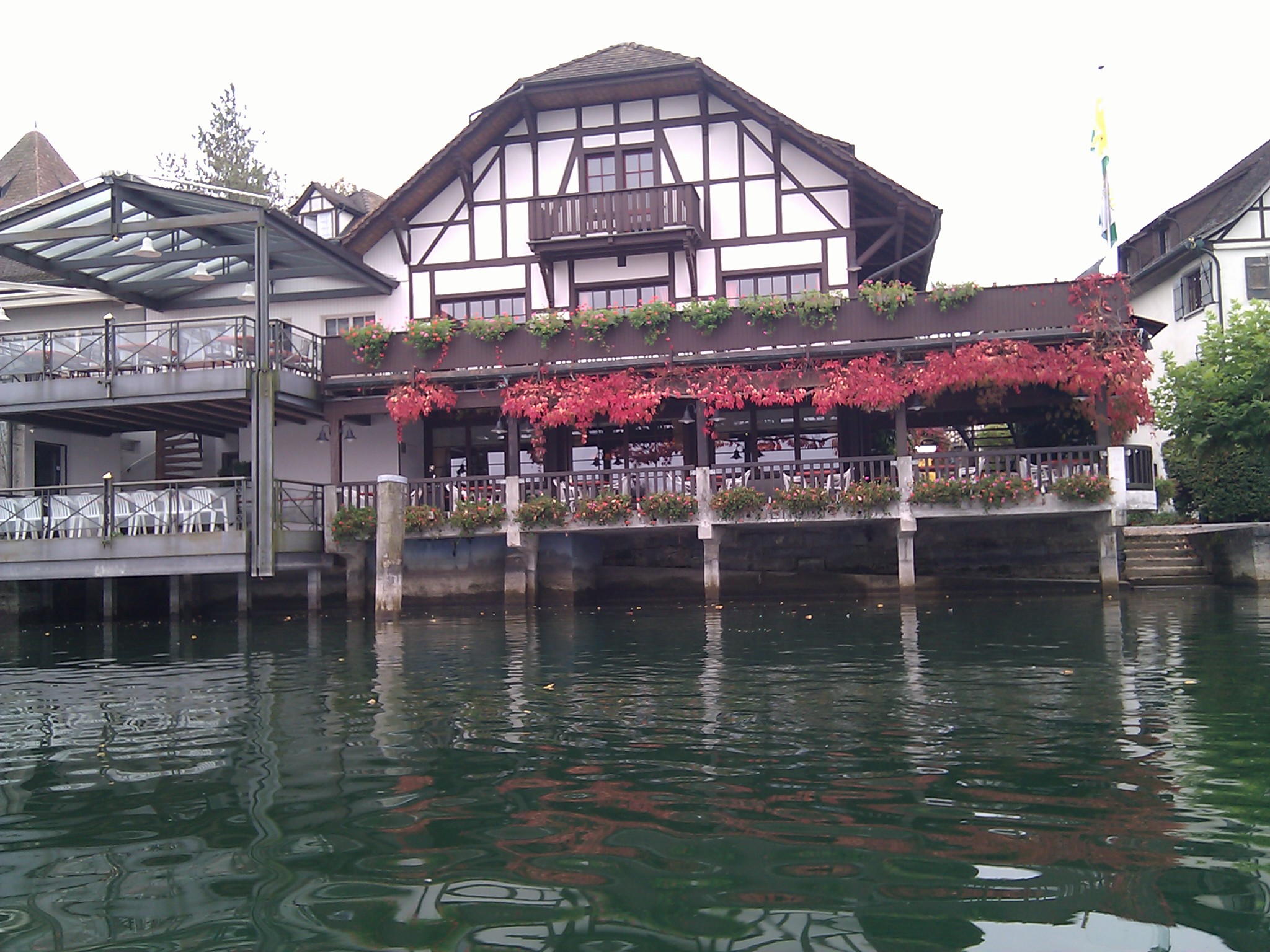
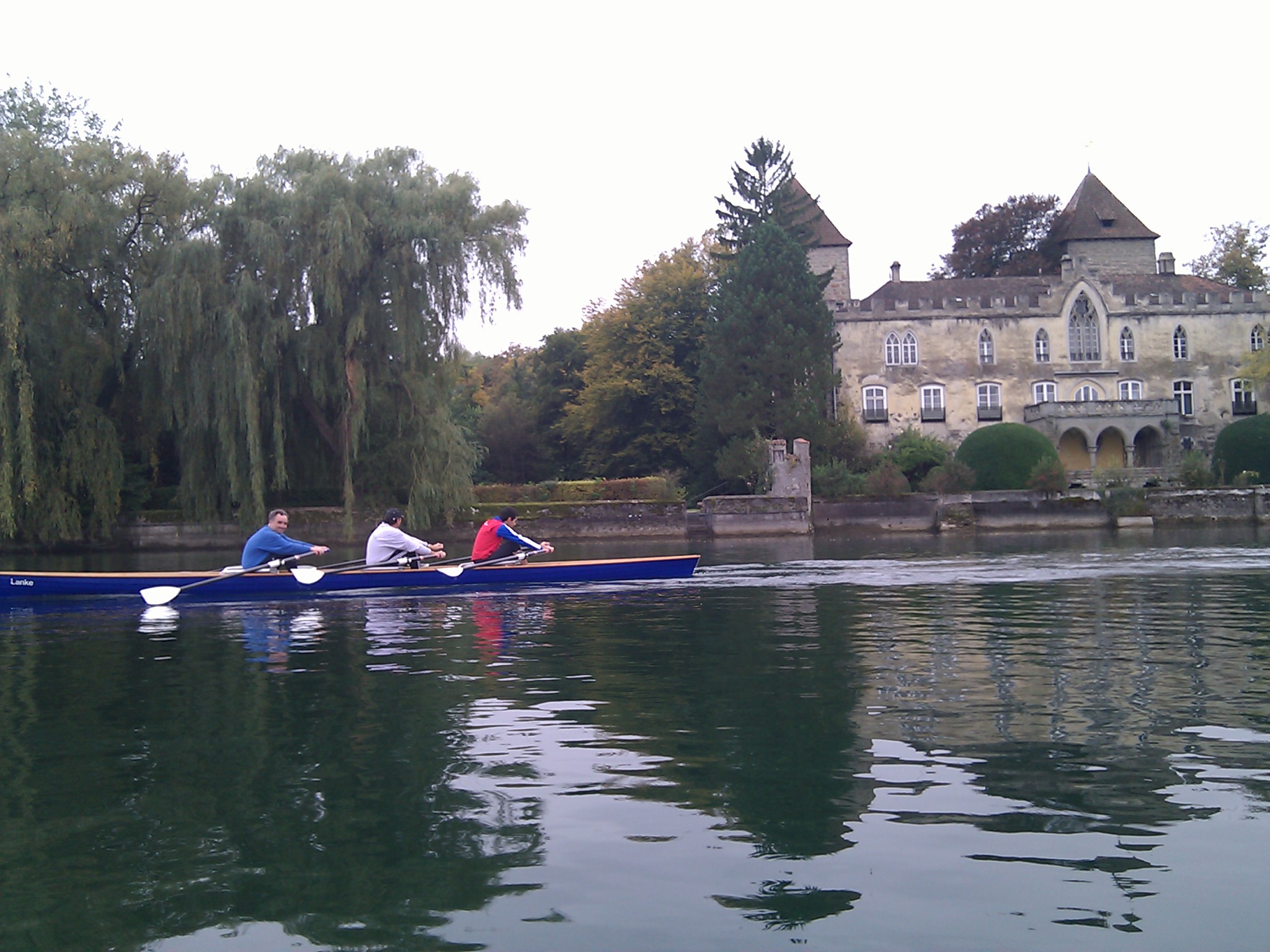
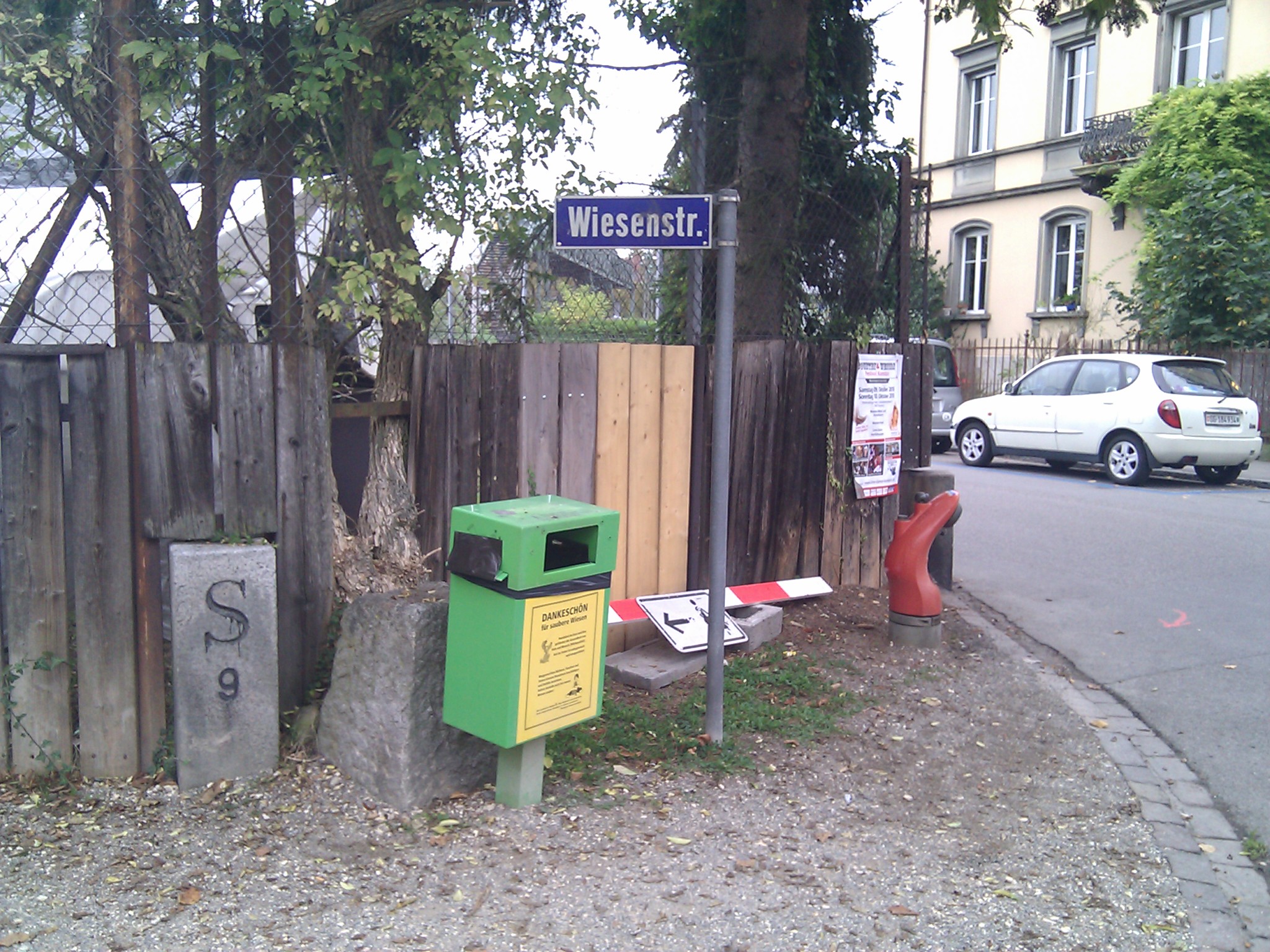
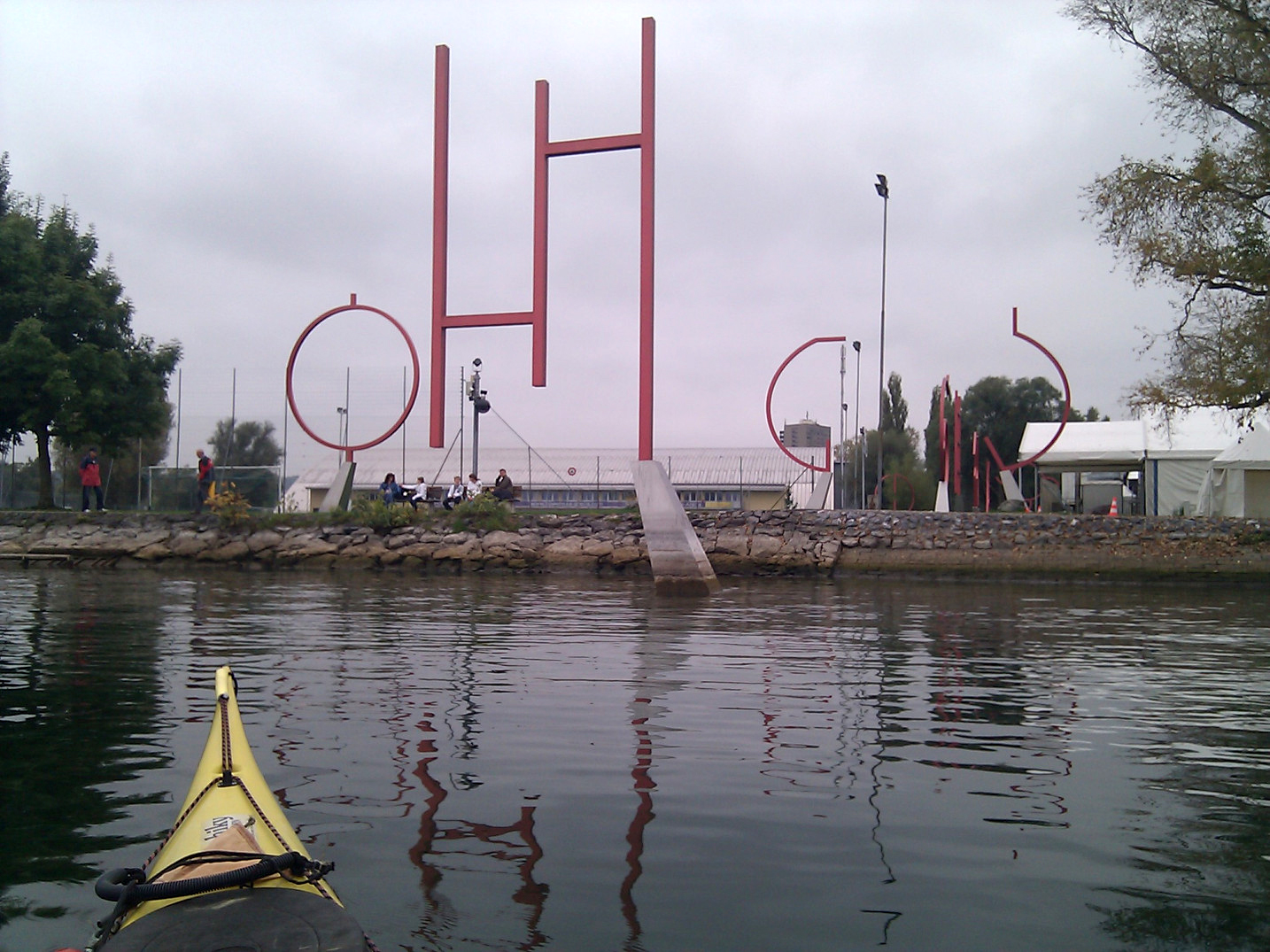
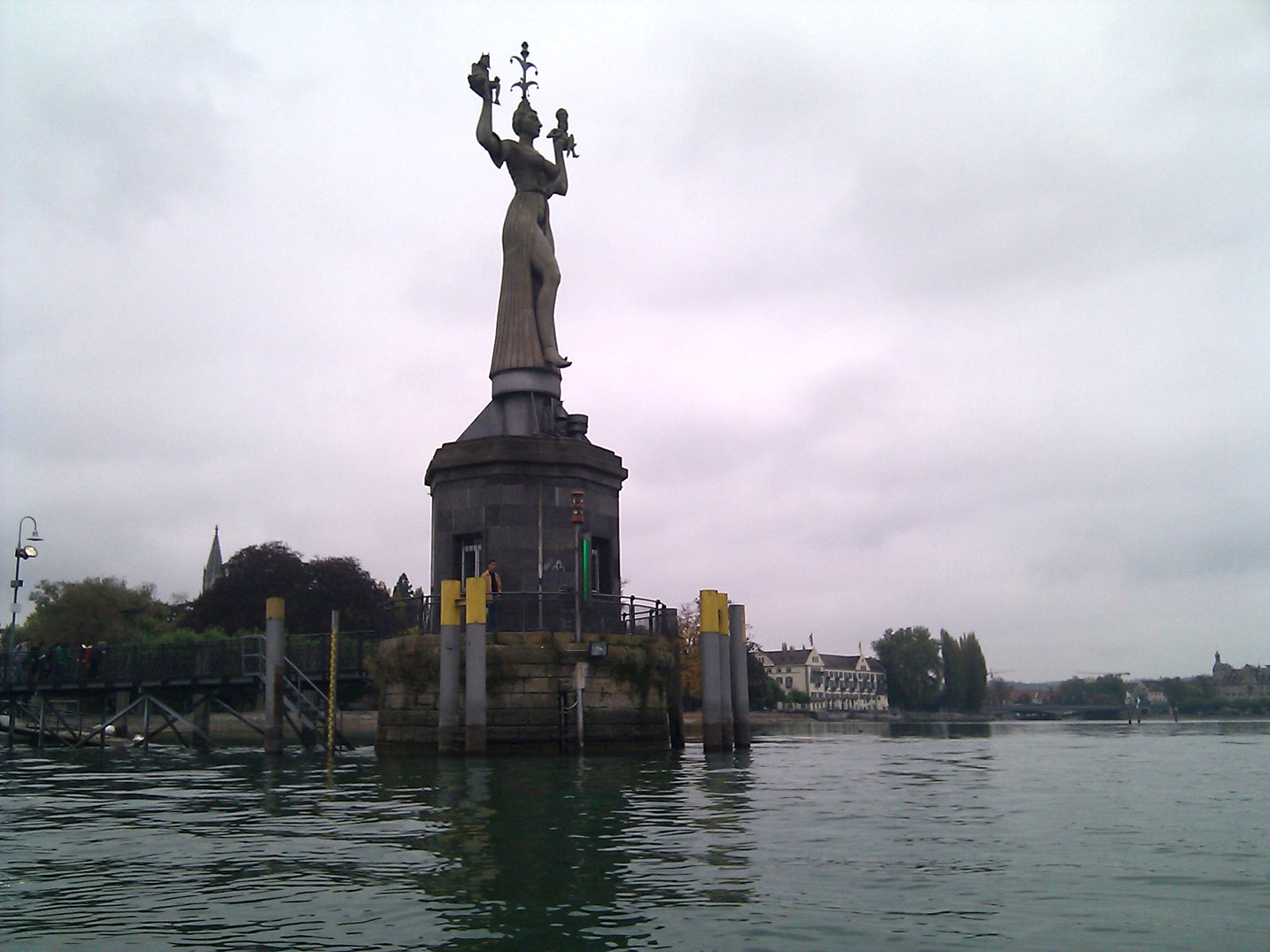
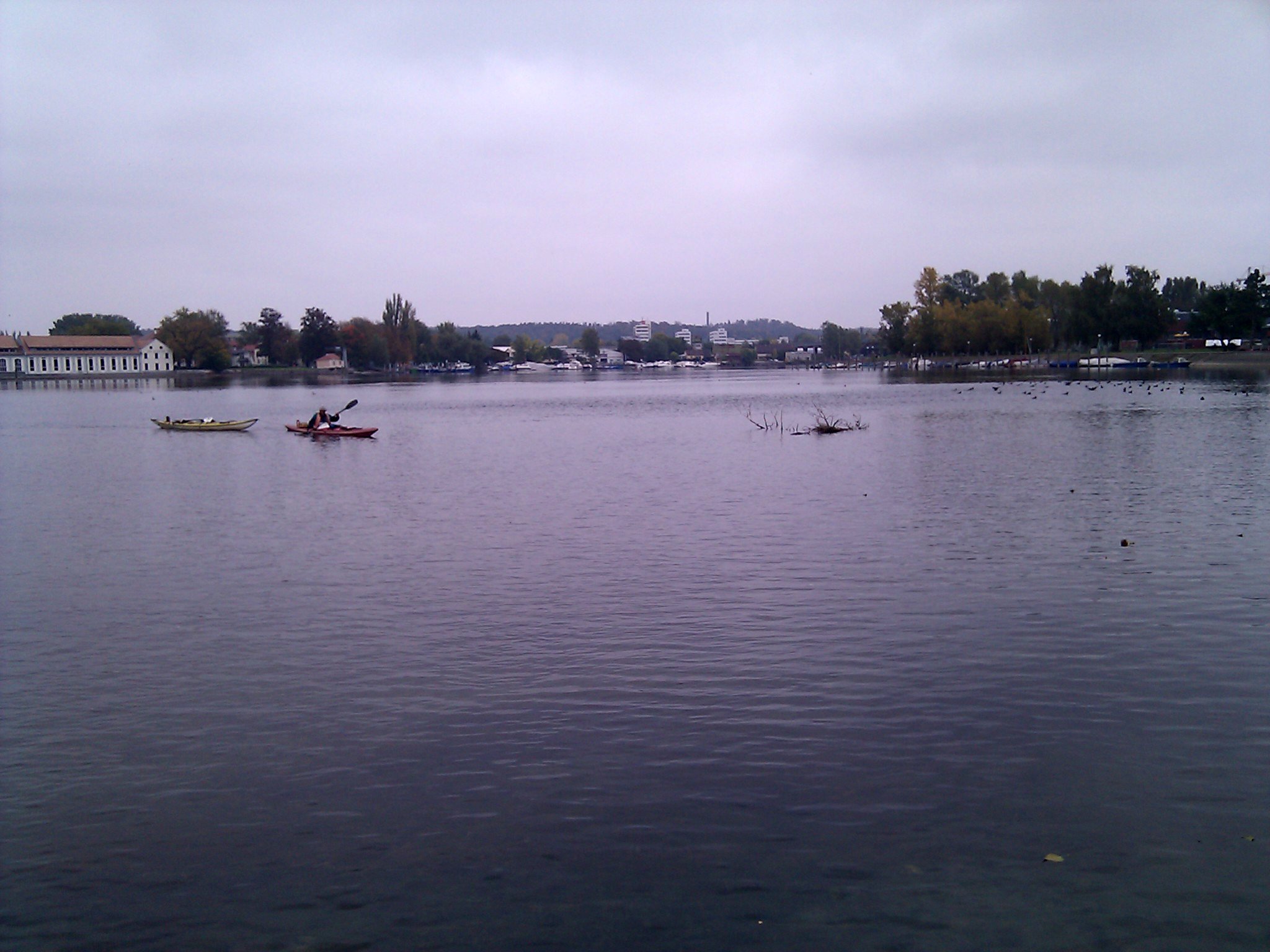
You can find an overview of ongoing debates with our journalists here . Please join us!
If you want to start a conversation about a topic raised in this article or want to report factual errors, email us at english@swissinfo.ch.